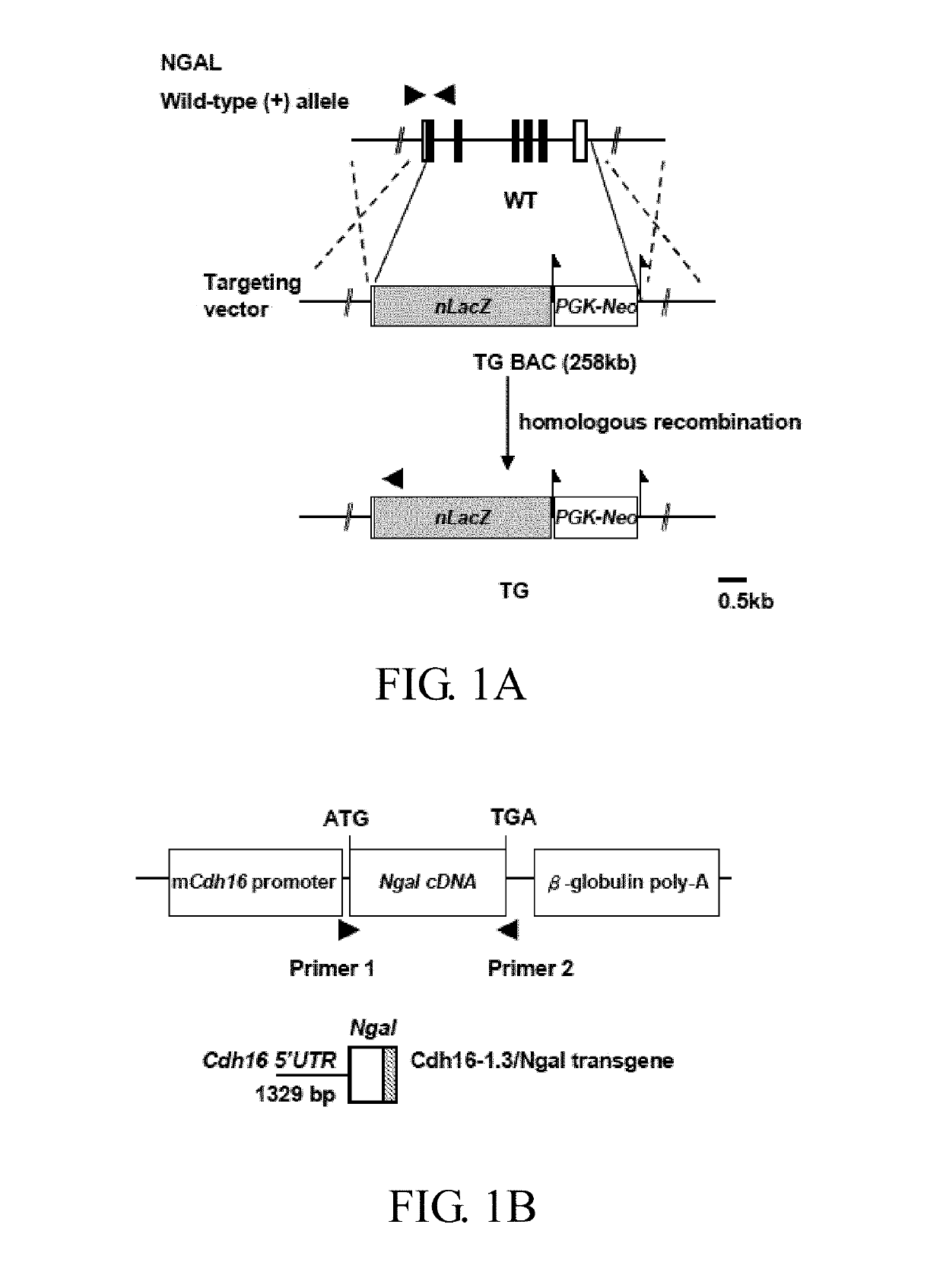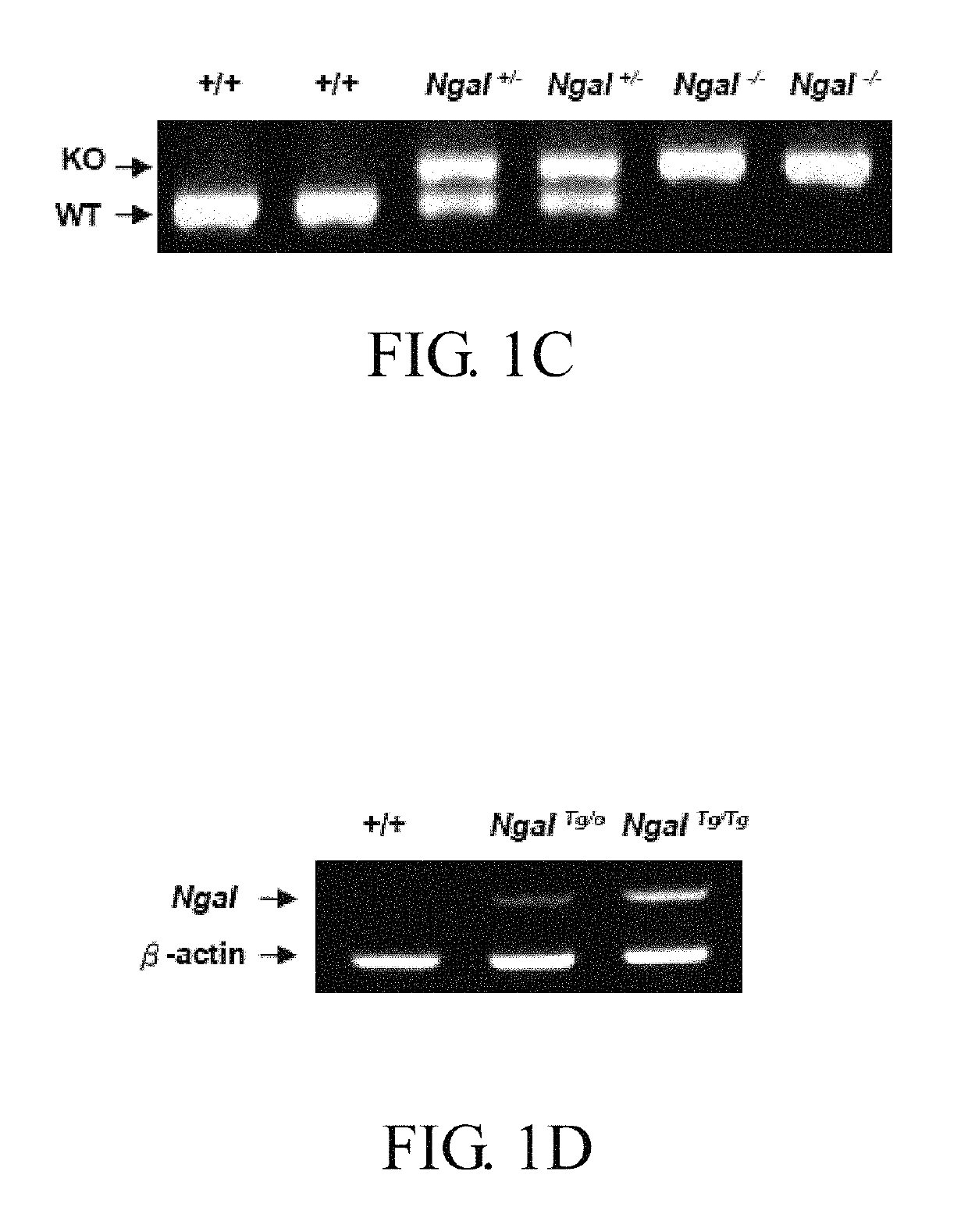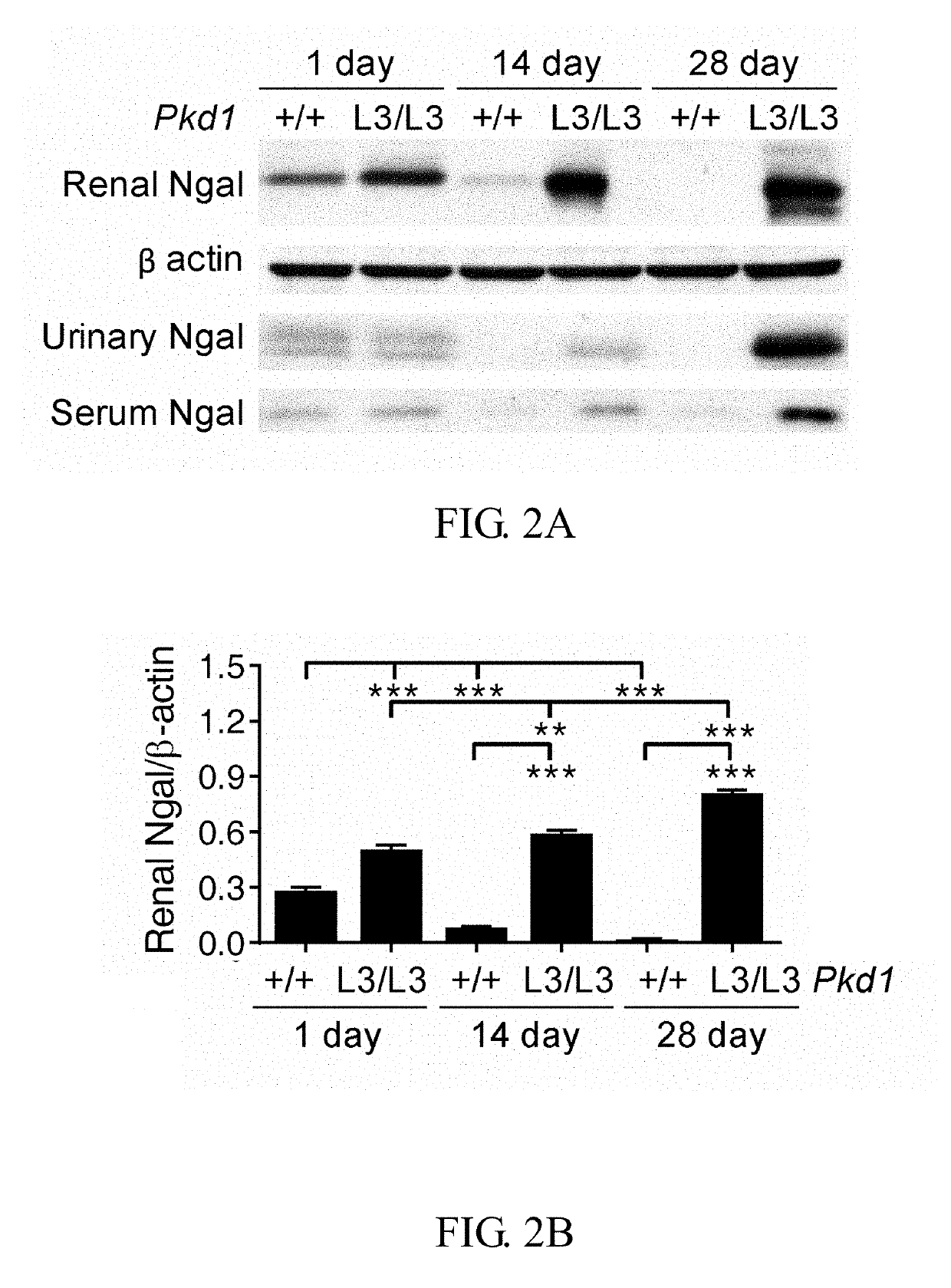Method of preventing polycystic kidney disease and PKD animal model with exogenous neutrophil gelatinase-associated lipocalin
a technology of neutrophil gelatinase and polycystic kidney disease, which is applied in the field of treating or preventing polycystic kidney disease and pkd animal models with exogenous neutrophil gelatinase-associated lipocalin, can solve the problem of identifying the risk of irreversible liver injury
- Summary
- Abstract
- Description
- Claims
- Application Information
AI Technical Summary
Benefits of technology
Problems solved by technology
Method used
Image
Examples
embodiments
Clinical Human Kidney Specimens and Patients
[0037]All kidney tissues were obtained from the human biobank of National Cheng Kung Hospital. This study was approved by the institutional review board of National Cheng Kung University Medical Center (A-ER-101-228). NGAL protein levels were examined by immunohostochemistry in 3 human kidney specimens (2 PKD cases, 1 normal kidney) obtained from the Department of Pathology, National Cheng Kung University Hospital, Taiwan. Normal tissue was obtained from a deceased patient whose autopsy had confirmed the absence of non-genitourinary tract disease. Case 1 had ADPKD with chronic renal failure due to severe tubulointerstitial nephritis, while case 2 had been diagnosed at 30 weeks of gestational age as premature ARPKD with polycystic mega-kidney, and the pregnancy had been terminated.
[0038]Kidneys were removed and fixed in 10% formalin at 4° C. overnight, then dehydrated and embedded in paraffin, and sectioned at 4 μm for i...
PUM
| Property | Measurement | Unit |
|---|---|---|
| pH | aaaaa | aaaaa |
| volume | aaaaa | aaaaa |
| concentration | aaaaa | aaaaa |
Abstract
Description
Claims
Application Information
 Login to View More
Login to View More - R&D Engineer
- R&D Manager
- IP Professional
- Industry Leading Data Capabilities
- Powerful AI technology
- Patent DNA Extraction
Browse by: Latest US Patents, China's latest patents, Technical Efficacy Thesaurus, Application Domain, Technology Topic, Popular Technical Reports.
© 2024 PatSnap. All rights reserved.Legal|Privacy policy|Modern Slavery Act Transparency Statement|Sitemap|About US| Contact US: help@patsnap.com










